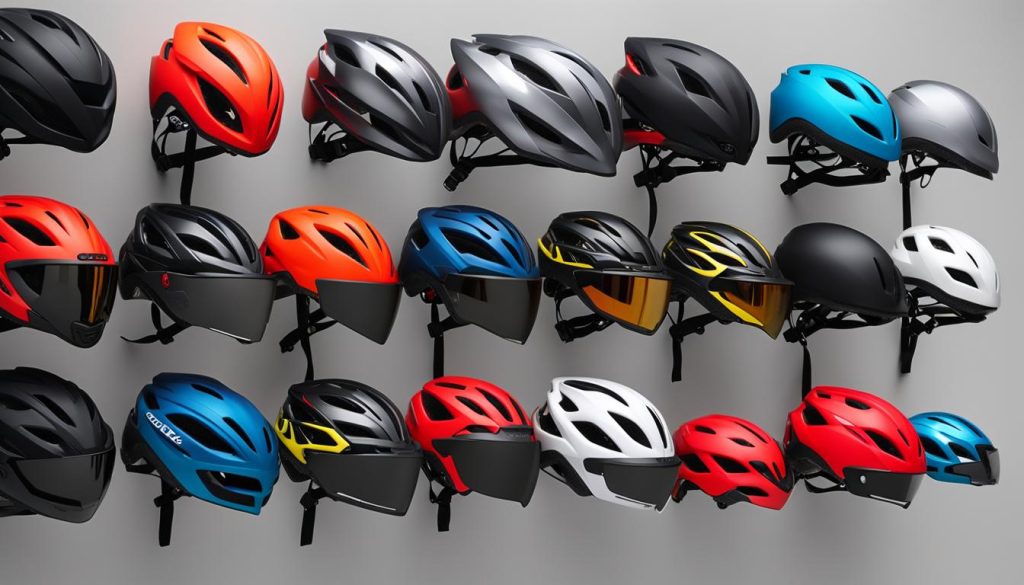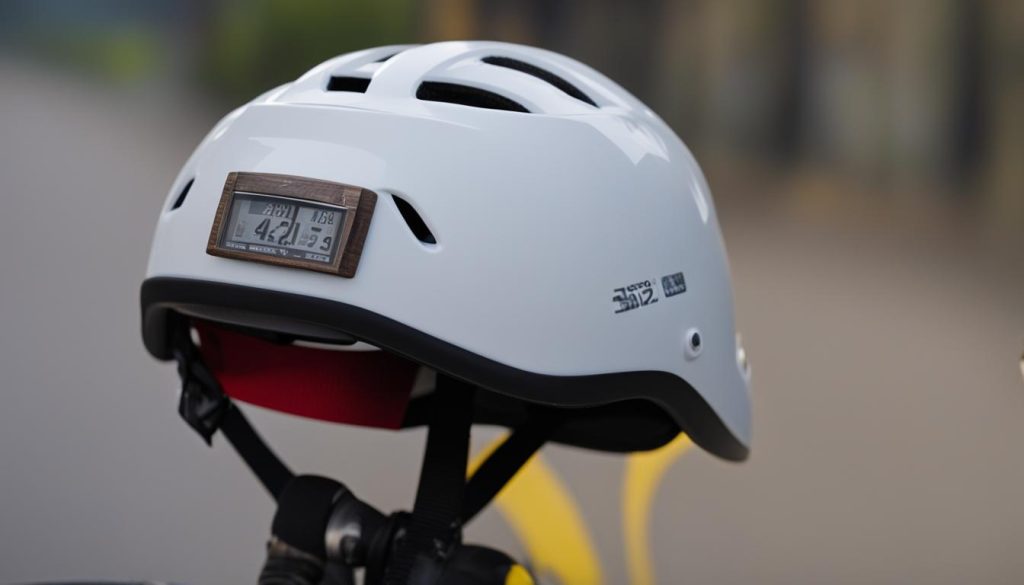When it comes to cycling, wearing a bike helmet is a vital safety precaution. However, finding the right helmet can be overwhelming with so many options to choose from. From style to size to safety features, it’s essential to consider a variety of factors to ensure that you select the best helmet for your needs.
In this article, we’ll guide you through the process of selecting a bike helmet that provides optimal protection and comfort. With our tips, you’ll be able to navigate the buying process with ease and find a helmet that fits well and meets safety standards.
Key Takeaways:
- Choosing the right bike helmet is crucial for safety while cycling.
- Consider important factors such as style, size, safety features, and more when selecting a helmet.
- Choosing a well-fitting, comfortable helmet is the best investment you can make to protect yourself on every ride.
- Follow our tips to navigate the buying process with ease and find the perfect bike helmet for your needs.
How to Find the Right Bike Helmet

Choosing the perfect helmet can seem daunting, but by considering a few key factors, you can find the right one that fits your head shape, size, and safety needs.
Tip 1: Consider Your Head Shape and Size
A helmet that fits correctly is essential for maximum protection and comfort on the road. Measure your head and try on different helmets to find the perfect fit. Consider that different helmet brands may have different sizing guidelines, so it’s always best to try before you buy. Look for a helmet that fits snugly, but not too tight, and sits level on your head without tilting forward or back.
Tip 2: Look for Safety Features and Certifications
Safety should be your top priority when selecting a bike helmet. Look for certification from a reputable organization such as the Consumer Product Safety Commission (CPSC), Snell, or ASTM International. These organizations ensure that the helmet meets specific safety standards. Additionally, look for features such as MIPS (Multi-directional Impact Protection System), which has been proven to reduce the risk of traumatic brain injury in certain types of impacts.
Tip 3: Consider Your Riding Style
Your riding style may also impact the type of helmet you need. For example, mountain bikers may prefer full-face helmets, which provide increased protection for risky downhill rides. Road cyclists may opt for lightweight helmets with plenty of ventilation, while commuters may want a helmet with reflective elements for visibility.
By keeping these tips in mind, you can find the right bike helmet for your needs. Remember that a comfortable and well-fitted helmet is the best investment you can make for your safety while cycling.
Top Tips for Purchasing a Bike Helmet
Buying a bike helmet can be overwhelming with the many options available in the market. Fortunately, we have compiled a list of top tips to help you navigate this process.
- Consider your riding style: The type of riding you do influences the type of helmet you need. Are you a road cyclist, a mountain biker, or a commuter? Choose a helmet that provides the necessary features for your riding style.
- Ensure a proper fit: Before making a purchase, ensure that the helmet fits properly. It should be snug and level, sitting low on your forehead. If it doesn’t fit properly, it won’t provide the necessary protection.
- Look for ventilation: Ventilation is important for airflow and keeping you cool during rides. Look for helmets with plenty of vents, especially if you ride in hot weather conditions.
- Consider the retention system: The retention system is what keeps the helmet in place on your head. Look for a system that is adjustable and comfortable.
- Check for safety certifications: Safety is paramount when it comes to bike helmets. Look for helmets with safety certifications such as CPSC, ASTM, or Snell.
By considering these factors, you’ll be able to choose a helmet that is comfortable, safe, and suitable for your riding style.
Conclusion
Choosing the right bike helmet is essential for your safety when riding. We hope that this guide has provided you with valuable insights into how to choose the perfect helmet. Remember, safety should always come first, so ensure that the helmet you choose meets safety standards and fits well.
Always try before you buy, and don’t hesitate to ask for help from a professional. A well-fitted and comfortable helmet is the best investment you can make to protect yourself on each ride. It is crucial to find a helmet that suits your personal style and preferences, so take your time and make an informed decision.
We hope that you have found this article informative and useful. We wish you safe and enjoyable cycling adventures ahead. Ride safe, and don’t forget to wear your helmet every time you ride!
Thank you for reading our bike helmet how-to-choose guide.
FAQ
How do I choose the right bike helmet?
When choosing a bike helmet, it’s important to consider factors such as the helmet’s fit, safety certifications, ventilation, and adjustability. Make sure to properly measure your head size and shape and look for helmets that meet safety standards like CPSC or ASTM. Ventilation is crucial for comfort, especially on hot rides, so choose a helmet with adequate airflow. Finally, look for helmets with adjustable straps and retention systems to ensure a secure and customized fit.
What safety certifications should I look for in a bike helmet?
Look for bike helmets that meet safety certifications such as CPSC (Consumer Product Safety Commission) or ASTM (American Society for Testing and Materials). These certifications ensure that the helmets undergo rigorous testing to meet safety standards and provide adequate protection in case of an impact.
What helmet style should I choose?
There are various helmet styles available, including road bike helmets, mountain bike helmets, and urban/commuter helmets. The style you choose depends on your riding preferences. Road bike helmets are lightweight and aerodynamic, while mountain bike helmets offer more coverage and protection. Urban/commuter helmets combine style and performance for everyday cycling. Choose a helmet style that suits your needs and riding style.
How should a bike helmet fit?
A bike helmet should fit snugly and comfortably on your head. It should sit level on your head, covering the forehead and not tilting back. The helmet should have a secure and adjustable strap system that keeps it in place without being too tight. When trying on a helmet, make sure there are no pressure points or uncomfortable spots. Remember to always adjust the helmet’s fit system to achieve a secure and personalized fit.
How often should I replace my bike helmet?
It’s recommended to replace your bike helmet every 3-5 years, depending on usage and any impacts it may have experienced. Helmets are designed to withstand a single impact, even if it doesn’t appear damaged. Additionally, factors such as sweat, UV exposure, and general wear and tear can compromise the helmet’s integrity over time. If you notice any signs of damage or deterioration, it’s best to replace your helmet immediately.
Can I use a bike helmet for other activities?
Bike helmets are specifically designed for cycling and may not provide the same level of protection for other activities. While they may offer some head protection, it’s best to use helmets that are specifically designed for the activity you’re engaging in, such as skateboarding, skiing, or climbing. These helmets are designed to meet the safety standards and impact requirements associated with those specific sports.





